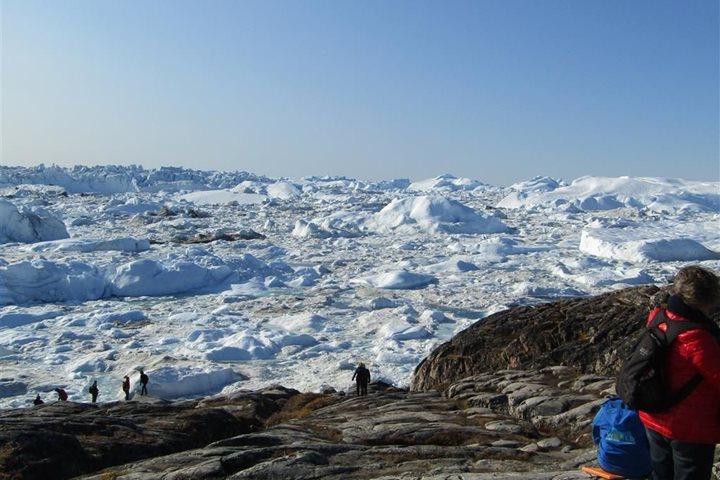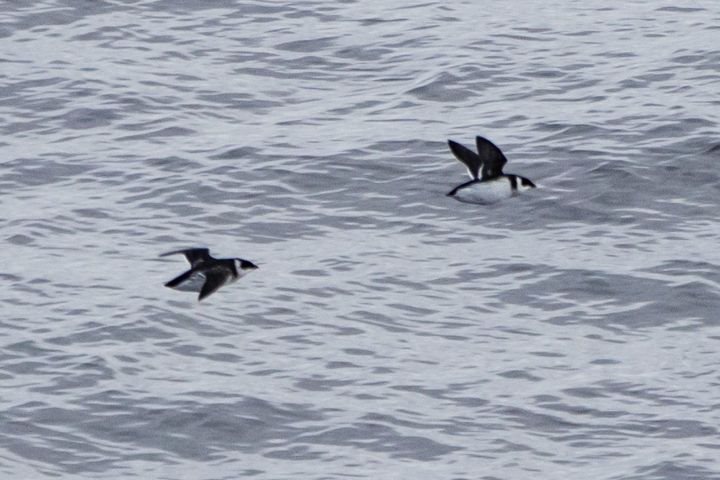National Geographic Explorer approached Fram Fjord, Ellesmere Island, on a clear, sunny morning. The striking landscape of the fjord was dominated by the contrast of the hills and valleys against a blue sea and sky. Some distant musk ox were peacefully feeding at the bottom of the valley. While some guests went ashore to explore the landing site and its surroundings, others took the opportunity to take kayaks out on the calm water and paddle around the fjord in the sun. We were surprised when the weather changed suddenly and the wind picked up, making us replace kayaks for Zodiacs in order to continue exploring.
In the afternoon, everyone was invited to explore further into the valley after the expedition team spotted a family of musk ox. Our long-walk hikers made it near the group of musk ox to get better views of the woolly animals as well as the plants they prominently feed on, such as the dwarf willow. During our hikes, we learned that this fjord had been inhabited by ancient peoples. The presence of archaeological remains in the area made our visit even more exciting! One structure was a Paleo-Eskimo house around 3,200 years old—the oldest site encountered in our expedition. Another structure was a Dorset house, between 1,000 and 3,000 years old and with some of the characteristic architectural features, such as their middle passage, intact. The unique conditions of the Arctic have made possible the preservation of these sites for thousands of years, and we were lucky to have seen sites so significant in the region’s history. Once back on board, we sailed toward Philpots Island, our next destination.









